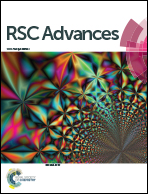AlN-based film buck acoustic resonator operated in shear mode for detection of carcinoembryonic antigens
Abstract
A film buck acoustic resonator (FBAR) operated in shear mode was fabricated and integrated with a microchannel for detection of the carcinoembryonic antigens (CEA). c-Axis inclined aluminium nitride (AlN) film was deposited on the Bragg reflector by rotating the substrate holder plate and using reactive magnetron sputtering. The polydimethylsiloxane (PDMS) microchannel was integrated with the fabricated resonator. The XRD results exhibited coexisting (002) and (101) orientations corresponding to the c-axis inclined AlN film. The resonant frequency of the FBAR was located at near 1.2 GHz. The average electromechanical coupling factor Keff2 and quality factor Q were 3.19% and 170, respectively. The frequency shift of the biosensor was proportionately increased as the concentration of the immobilized anti-CEA aptamer increased. The CEA binding ratio was initially increased with antibody concentration reaching a highest value at 47.04%. The mass sensitivity of the fabricated biosensor was calculated to be approximately 2045.89 Hz cm2 ng−1.


 Please wait while we load your content...
Please wait while we load your content...